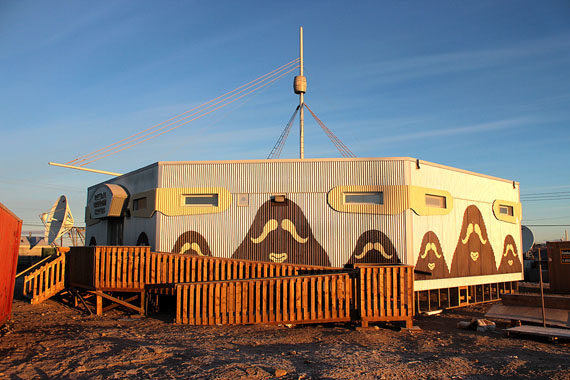Gjoa Haven center has big plans to display Franklin Expedition artifacts
Nattilik Heritage Centre wants to more than double its floor space for displays, local programming.

Planning continues for expansion at Gjoa Haven’s community heritage center so it can showcase artifacts from two historic shipwrecks that Inuit helped locate.
“There’s a lot of attention and interest in developing this project,” said Campbell Cameron, a consultant with the Nattilik Heritage Centre.
The cente showcases the history and culture of the Nattilik Inuit, and provides local programming for the community.
Now, the 3,300-square-foot center is looking to expand, hoping to add another 4,800 square feet of space so it can display more than 100 artifacts from the ships that were part of the 1845 Franklin Expedition.
But to do that, the center needs to find a designer, get construction completed and secure more funding.
Currently, the plan is to have construction start when the summer sealift in 2023 begins, and have the expansion completed by 2025.
Explorer Sir John Franklin and his crew set sail from England in 1845 with two ships, HMS Erebus and HMS Terror. They hoped to cross the last unnavigated sections of the Northwest Passage across the Arctic.
For the next 169 years the ships were believed lost, despite several searches, until an expedition led by Parks Canada and aided by local Inuit discovered the Erebus in 2014 and the Terror in 2016 near Gjoa Haven.
“I think some people knew where [the ships] were, but no one was really asking Inuit,” said Nattilik center board member Jennifer Ullulaq.
As a result, the location of the shipwrecks was designated a national historic site, co-managed by Parks Canada and Inuit.
Some artifacts were returned to Britain. Of the ones Canada received, more than 100 will be housed in the Nattilik Heritage Centre, Cameron said.
While the expansion plan looks promising, there have been hurdles to getting it built.
Primarily, securing more funding as prices rise due to global economic challenges has been a problem, he said.
The project has federal funding from Parks Canada and the Canadian Northern Economic Development Agency, as well as from organizations like the Kitikmeot Inuit Association, he said.
But the rise in inflation, workers’ shortages, COVID-19-related complications and global supply chain shortages have increased the cost of the project.
A request for proposals to design and construct the expansion was issued in December, but it had to be pulled as costs kept rising, Cameron said.
Then the further increase in fuel prices after Russia attacked Ukraine in February did not help, Cameron said.
On June 15, a revised request for proposals to design and build was issued.
“In the meantime, we’ll secure the additional funding we require to fully execute the project,” Cameron said.
A larger center is not needed only to house those artifacts, Ullulaq said, it will help the community too.
“We need a bigger center, as Gjoa Haven is growing and so is our tourism [sector],” she said.
That sector — which has been helped by the Franklin Expedition discovery — gives people in the community an opportunity to sell their art, and to show off their talents in activities like throat singing or drum dancing, Ullulaq said.
An expansion of the Nattilik Heritage Centre is also an opportunity to expand the space inside used to promote Nattilik Inuit culture and heritage.
Ullulaq said there will be activities in the expanded space, such as storytelling, art workshops and language learning workshops.
“We want to make sure we are setting up the locals for success,” Cameron said.